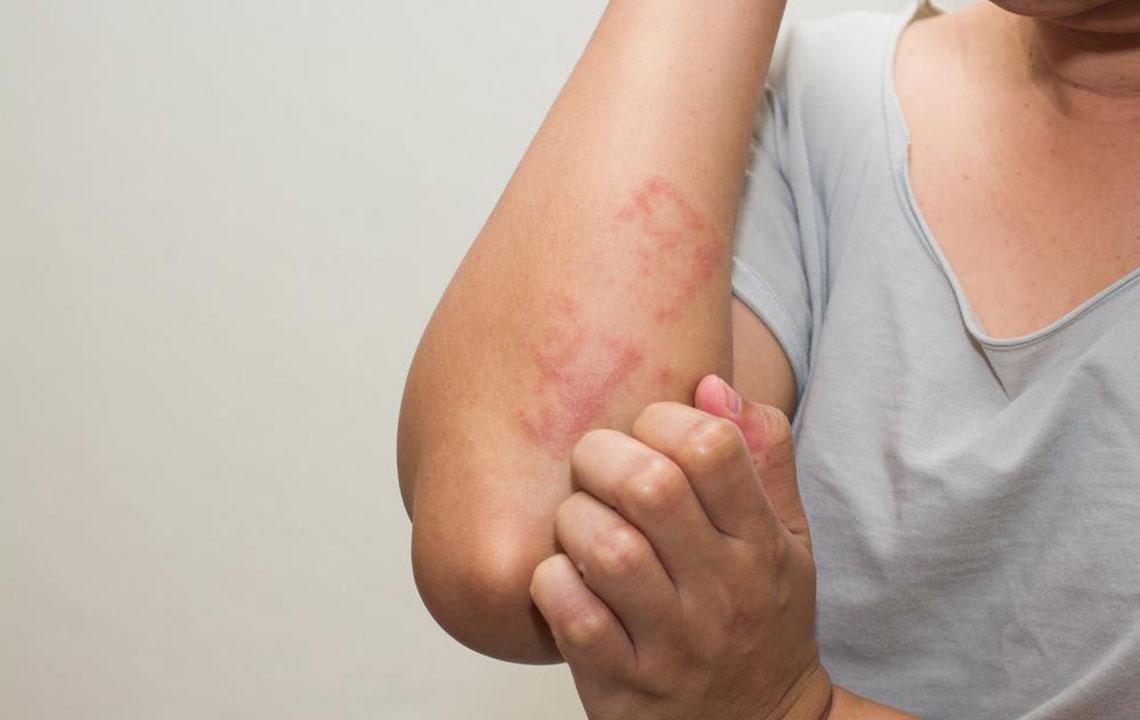Lupus Skin Rash – Symptoms and Treatment

Lupus Skin Rash is a disease which causes inflammation, flare-ups and has several other symptoms. The improper functioning of the immune system damages the skin tissue and results in flare-ups. The symptoms of lupus skin rash start in the early adulthood from the age of thirty and worsen as the age progresses. Studies reveal the occurrence of lupus is high among women as compared to men. Lupus skin rash affects people in different ways. Some of them suffer from mild symptoms while other could have a severe problem. The disease can’t be cured permanently, however, treatment can reduce the intensity of pain.
Common symptoms of lupus skin rash
The main symptoms which characterize the lupus skin rash are fever, rash, hair fall, fatigue, kidney infections, and inflammation in joints, dried mouth, thyroid troubles and gastrointestinal dysfunction.
Nail problems: You may have discolored and brittle nails due to lupus. The nails may crack and fall anytime. At times red spots are formed in the nail bed due to the inflammation of the blood vessels.
Joint pain: Pain in the wrists, fingers, limbs, and knees are the initial signs of lupus. You can even suffer from muscular pain, which causes inflammation.
Fever: People with lupus suffer from mild to high degree fever along with fatigue. They could feel exhausted throughout the day and find it difficult to walk.
Butterfly rash: As the name indicates butterfly-shaped rash appears across the cheeks and Nose Bridge. Red spots, mouth sores, and purple rashes are some of the prime signs of butterfly rash.
Hair fall: People may experience the falling of hair. The hair becomes thin on the scalp along with the development of flakes on the scalp.
Sensitivity to light: Patients with lupus are highly sensitive to the sun. Spending a day in the sunlight can trigger the rashes. At times some medicines make people more sensitive to sunlight and UV radiations.
Raynaud’s: The worsening of lupus skin problem results in a condition called Raynaud’s. Raynaud’s is characterized by the numbing of fingers and toes. The blood vessels contracts and obstructs the flow of blood. In certain cases fingers and toes turn blue or white.
Diagnosis of lupus skin rash
Diagnosing lupus is quite complicated. This is because the symptoms of lupus vary among individuals. A blood test for antinuclear antibodies is done to diagnose lupus. Different lab tests are conducted to check the functioning of the kidney, cell counts and blood clotting time. Physicians may even carry out the tissue biopsy to detect the symptoms of lupus skin rash.
Treatment for lupus skin rash
Many medications and treatments are available for lupus skin rash. You can take the non-steroidal, corticosteroid and anti-inflammatory drugs to cure the problem. Corticosteroids are available as tablets and can be even given intravenously. Doctors may even prescribe antimalarial drugs to control the ulcers, skin rashes and joint pain.
Apart from the medications, you must even follow some self-care tips to prevent the occurrence of lupus skin rash.
- Go for walk and try some regular exercise
- Always cover yourselves before stepping out in the sun
- Say no to smoking
- Practice stress reduction and relaxation techniques
- Get proper sleep. People who suffer from lupus may take an adequate sleep of about 12 hours in a day.
How to deal with stress
High stress levels can induce the occurrence of lupus. It is advised to keep the stress levels low. First and foremost practice yoga, meditation, and relaxation therapies to get rid of high stress and anxiety levels. Make efforts to calm your body and mind. Regular exercising promotes the blood circulation and makes you physically and mentally active. This helps fight fatigue. Spare some time for yourselves during the hectic day schedule
Effects of lupus on body organs
Kidney: The progression of lupus causes the kidney infections. The problem starts with inflammation in the legs and ankles. The doctors conduct blood and urine tests to determine the problem.
Heart: Lupus causes the inflammation of the sac around the heart which could result in intense pain in the left part of the chest. There are chances of clogging of arteries which could cause the coronary artery disease. Inflammation of the heart and heart valve disease are other possible side effects.
Lungs: Lupus causes the inflammation of the lungs which could cause difficulty in breathing and chest pain.
Digestive problems: Digestive problems such as stomach pain, vomiting, nausea and inflammation in the liver can occur due to lupus skin rash. Some people may even lose their weight. Proper medications work effectively to cure the digestive problem.
The treatment a person needs for lupus depends on the severity of the disease. With the help of proper medications, people deal with the symptoms of lupus.


